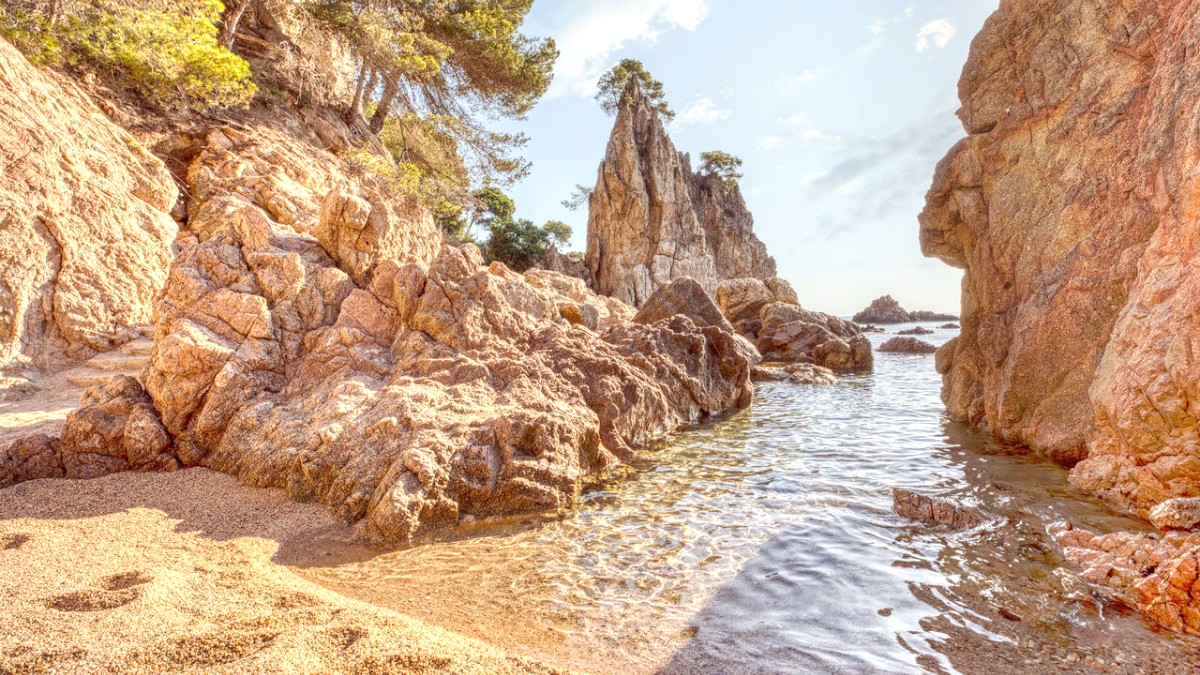
Spain
This guide details Calella de Palafrugell. It gives you information for trip planning, local custom comprehension, and discovering the best experiences. From journey preparation to enjoying local food and activities, this guide supports making the most of your visit. It covers what to pack, where to stay, and dining, for a smooth and memorable time.
Calella de Palafrugell distinguishes itself from other Costa Brava towns. It sidesteps the large-scale development seen elsewhere, guarding its character. The town’s dedication to its heritage is visible in its architecture and the continued presence of fishing boats in its small harbors.
You find a destination that respects its past while offering modern comforts. This balance makes Calella an unique spot for those who value authenticity and natural beauty. Prepare to uncover the quiet appeal of this Mediterranean jewel.
Imagine waking to the gentle sound of waves, with the scent of sea salt and pine in the air. Picture cobblestone paths winding through white-washed houses, leading you to small coves where fishing boats bob on water. This is the daily reality in Calella de Palafrugell, a coastal village on Spain's celebrated Costa Brava. It presents a place where time slows, allowing you to absorb the natural beauty and the quiet rhythm of Mediterranean life. This destination offers a blend of serene beaches, inviting local culture, and a relaxed atmosphere. It presents an escape from the rush of modern life.
Calella de Palafrugell is more than a beach destination. It presents a window into traditional Catalan life, shaped by the sea for centuries. The village's charm comes from its history as a humble fishing community, a legacy visible in its architecture and daily routines. You find quaint squares, inviting promenades, and small, family-run restaurants serving the day's fresh catch. This guide supports you in unlocking the experience, whether you seek relaxation, outdoor activity, or a connection with local culture.
Travelers discover a destination where local character shines. It avoids large resorts and bustling nightlife.
Coves, like Port Bo with its famous arches, present picturesque settings for sunbathing and swimming.
The Camí de Ronda coastal path invites exploration, offering stunning views at every turn.
A destination that captures the heart, one peaceful moment and scenic view at a time.
This guide supports navigating its offerings, for a smooth and rewarding visit.
Calella de Palafrugell sits on the Costa Brava, a stretch of coastline in Catalonia, Spain. It forms part of the municipality of Palafrugell, located in the Baix Empordà region of Girona province. This position places it in the northeastern corner of Spain, bordering the Mediterranean Sea. The village is nestled within a landscape of rocky coves, pine forests, and dramatic cliffs. These natural features define its visual appeal. The coastline here has a rugged character, creating many small, secluded beaches alongside the main village coves.
It spreads across several small bays, including Port Bo, Platja del Canadell, and El Golfet. Each bay presents a different beach experience, from the lively, central Port Bo to the quieter, more natural El Golfet. Hills rise gently behind the village, giving viewpoints and protecting it from strong winds. This creates a sheltered environment. The local geology features striking rock formations, shaped by centuries of sea and wind erosion, adding to the scenic beauty.
Calella de Palafrugell is within a region known for diverse landscapes. To its immediate north and south, the Camí de Ronda coastal path presents walking opportunities that connect it to neighboring towns like Llafranc and Tamariu. Inland, the landscape transitions quickly to rolling hills dotted with medieval villages and agricultural land, including vineyards and olive groves. This geographical diversity offers options for day trips beyond the coast. The village's proximity to larger towns like Palafrugell, Girona, and even Barcelona, presents easy access to additional services, transport hubs, and cultural sites, without losing its quiet village identity. Its setting makes it a good base for exploring both the immediate coastal wonders and the wider region.
The village's character arises from its location amidst nature and its maritime past, offering a peaceful yet engaging setting.
Calella de Palafrugell's history traces back to its identity as a fishing village. For centuries, the sea shaped the lives of its inhabitants. They relied on fishing for their livelihood, navigating the Mediterranean waters for the day's catch. The village's distinctive architecture, notably the white-washed houses lining the waterfront and the arcaded buildings of Port Bo, mirror this humble past. These structures once served as fishermen's homes and storage for their boats and nets. They are a testament to the village's origins.
The region around Palafrugell, including Calella, also is a rich history tied to the cork industry. From the 18th century onwards, cork production became a major economic force in the Baix Empordà. Palafrugell, the administrative center, hosted numerous cork factories. This industry brought prosperity and shaped the local culture and demographics. While Calella de Palafrugell remained mainly a fishing community, it gained indirect benefits from the economic growth of its inland neighbor. This dual heritage of sea and land commerce presents an unique historical backdrop.
The village carefully managed its growth, avoiding overdevelopment, thereby retaining much of its original character.
Over time, Calella transitioned from a working village to a cherished summer destination.
The annual Habaneras concert celebrates Cuban-influenced sea shanties, a cultural event.
It welcomes visitors seeking peace alongside engaging activities. The village is defined by its series of small, sandy coves, each with clear, inviting water. Platja del Port Bo, with its iconic arched promenade, acts as the village's heart. Fishermen's boats often rest here, adding to the picturesque scene. This area works well for enjoying a meal by the sea or simply watching the world pass by.